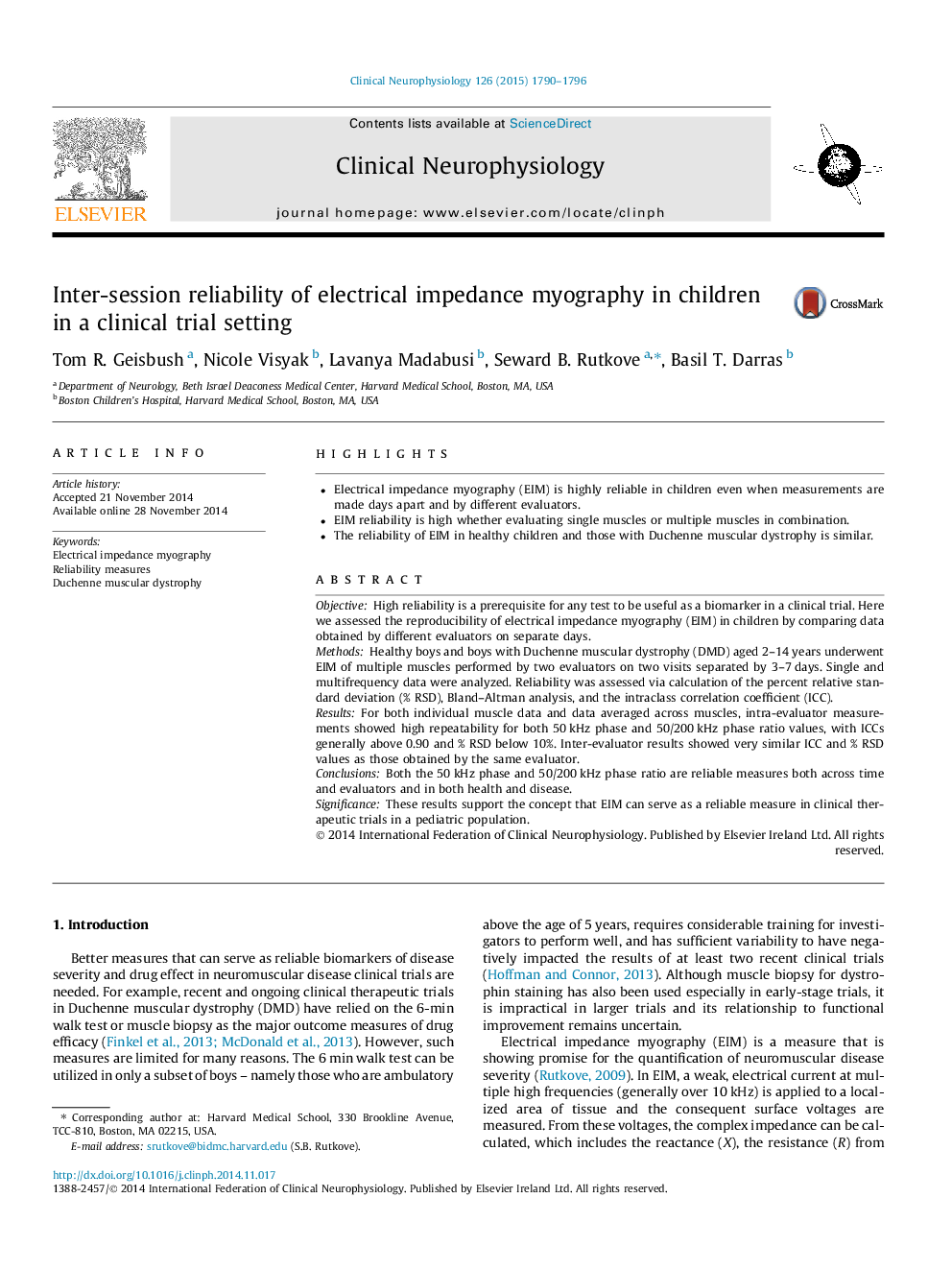| Article ID | Journal | Published Year | Pages | File Type |
|---|---|---|---|---|
| 3042829 | Clinical Neurophysiology | 2015 | 7 Pages |
•Electrical impedance myography (EIM) is highly reliable in children even when measurements are made days apart and by different evaluators.•EIM reliability is high whether evaluating single muscles or multiple muscles in combination.•The reliability of EIM in healthy children and those with Duchenne muscular dystrophy is similar.
ObjectiveHigh reliability is a prerequisite for any test to be useful as a biomarker in a clinical trial. Here we assessed the reproducibility of electrical impedance myography (EIM) in children by comparing data obtained by different evaluators on separate days.MethodsHealthy boys and boys with Duchenne muscular dystrophy (DMD) aged 2–14 years underwent EIM of multiple muscles performed by two evaluators on two visits separated by 3–7 days. Single and multifrequency data were analyzed. Reliability was assessed via calculation of the percent relative standard deviation (% RSD), Bland–Altman analysis, and the intraclass correlation coefficient (ICC).ResultsFor both individual muscle data and data averaged across muscles, intra-evaluator measurements showed high repeatability for both 50 kHz phase and 50/200 kHz phase ratio values, with ICCs generally above 0.90 and % RSD below 10%. Inter-evaluator results showed very similar ICC and % RSD values as those obtained by the same evaluator.ConclusionsBoth the 50 kHz phase and 50/200 kHz phase ratio are reliable measures both across time and evaluators and in both health and disease.SignificanceThese results support the concept that EIM can serve as a reliable measure in clinical therapeutic trials in a pediatric population.
